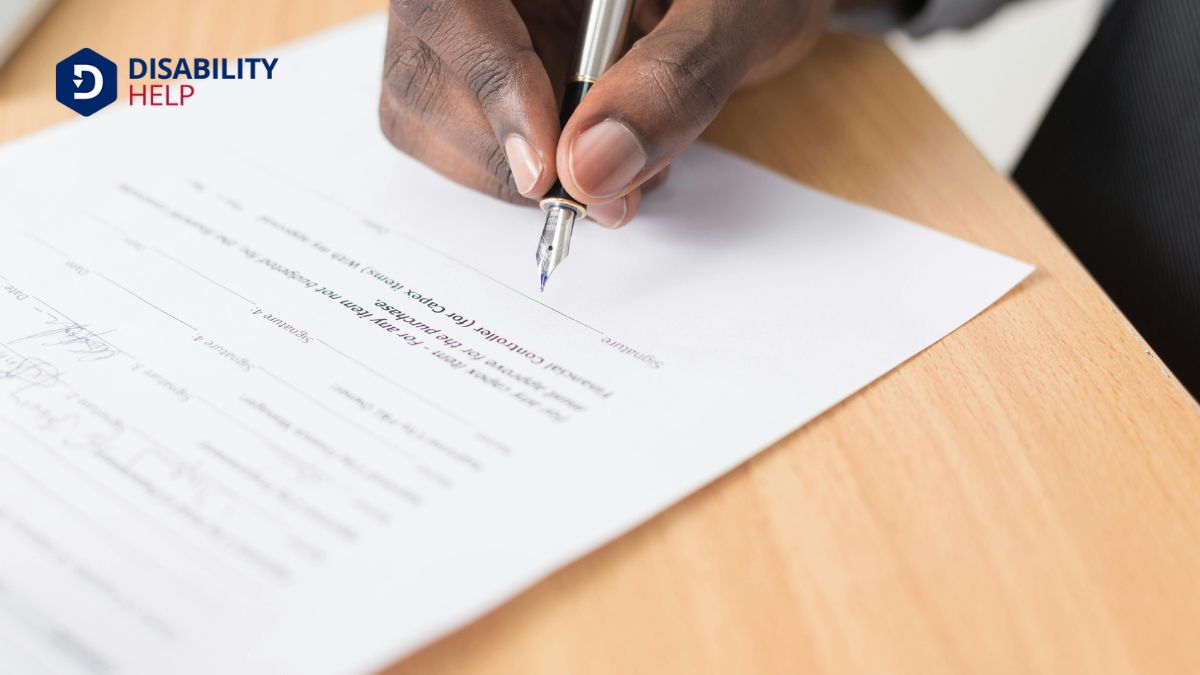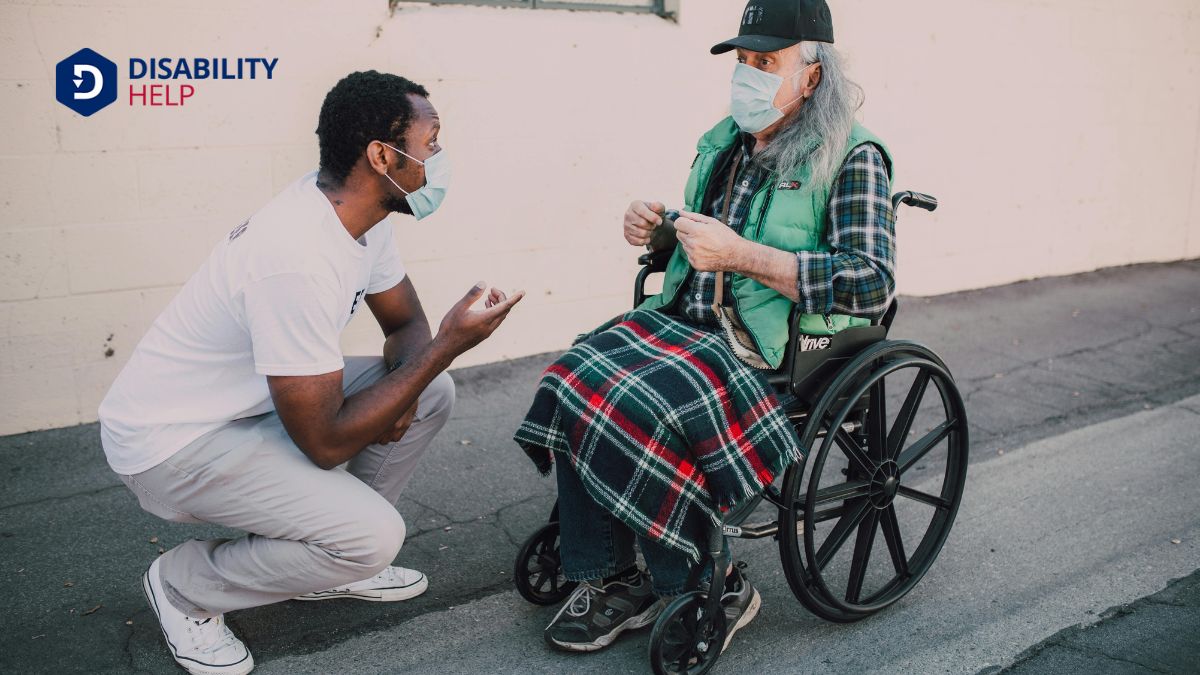We require proof for benefit claims to guarantee fairness and prevent fraud. By verifying eligibility, we verify benefits reach those who truly need them. This process helps maintain the integrity of the system and protects public funds from misuse. Proper documentation supports the accuracy and efficiency of claims, guaranteeing timely payments and compliance with legal mandates. It also builds trust in the system, giving us peace of mind that resources are being allocated responsibly. If you're interested, you'll discover how this process strengthens overall accountability and reliability.
Key Takeaways
- Prevent Fraud and Abuse: Proof prevents fraudulent claims and ensures that benefits go to those who genuinely qualify.
- Verify Eligibility: Submitting proper evidence verifies that claimants meet eligibility criteria and deserve the benefits.
- Ensure Program Integrity: Documentation helps maintain the integrity of benefit programs by filtering out unqualified applicants.
- Legal Compliance: Proof is required to comply with legal mandates and ensure fairness in benefit distribution.
- Protect Public Funds: Verification processes safeguard public funds by ensuring benefits are only allocated to eligible recipients.
Preventing Fraud and Abuse
When we demand evidence for benefit claims, it's a critical step in preventing fraud and abuse within the system. By requesting proof, we make sure that benefits are only provided to those who genuinely qualify. This verification process is essential for maintaining the integrity of our benefit programs.
Demanding evidence acts as a safeguard against false or exaggerated claims. Without it, individuals might try to manipulate the system for financial gain, leading to the misuse of limited resources. By insisting on evidence, we can filter out unqualified applicants, thereby protecting the benefits for those who truly need them.
The presence of evidence also helps us protect resources, guaranteeing they're allocated appropriately. When benefits are distributed fairly and accurately, we reduce the risk of fraud and abuse, creating a more robust and trustworthy system. This verification process helps maintain public trust and safeguards our support systems to remain sustainable.
In essence, evidence isn't just a bureaucratic hurdle; it's a necessary measure to prevent fraud and abuse. By requesting proof for benefit claims, we uphold the integrity of the system and safeguard the resources meant for those in genuine need.
Ensuring Claim Validity

When we talk about ensuring claim validity, it's essential that we verify eligibility criteria and support legal requirements. Providing proof helps prevent fraudulent claims, ensuring that benefits reach those who truly qualify. Without proper documentation, claims can face delays or even denial, underscoring the significance of thorough verification.
Verifying Eligibility Criteria
Verifying claim validity hinges on the meticulous process of confirming eligibility criteria. When we submit evidence that shows we meet the requirements for a benefit claim, we're essentially demonstrating our entitlement. This step is vital because it allows the insurance company to conduct a verification of eligibility, guaranteeing that the benefits are distributed fairly and accurately.
When we file a claim for benefits, it's not enough just to state our eligibility; we need to provide concrete proof. This might include documents like medical records, income statements, or employment validation, depending on the type of benefit being claimed. By submitting this evidence, we help the insurance company confirm that we truly meet the necessary criteria, which supports the legitimacy of our benefit claim.
Without this proof, it would be nearly impossible for insurers to determine whether we qualify for the benefits we're seeking. Verification of eligibility criteria is vital because it upholds the integrity of the benefit distribution system. It ensures that only those who genuinely meet the requirements receive the benefits, preventing misuse and guaranteeing that resources are allocated to those who truly need them. This safeguards the system for everyone involved.
Preventing Fraudulent Claims
Preventing deceitful claims is crucial for upholding the integrity of the benefit system. We must understand that requiring evidence for benefit claims isn't just bureaucratic red tape—it's a critical step to safeguard the validity of claims. Deceitful claims can deplete resources and deprive those who genuinely need assistance. By requesting proof, we verify the legitimacy of each claim, guaranteeing that benefits are awarded to eligible individuals only.
Evidence needed for benefit claims acts as a protection to avert false claims from slipping through the cracks. This process of verification is crucial to shielding the system from abuse. When claimants provide documentation, it validates their needs and confirms their eligibility.
This, in turn, diminishes the risk of misuse and ensures that resources are allocated appropriately.
Supporting Legal Requirements
Legal compliance is the cornerstone of any benefits system. To guarantee the validity of benefit claims, we must adhere to strict legal standards. These standards mandate that claimants provide adequate proof to support their entitlement. Meeting these evidence requirements isn't just a formality; it's essential for demonstrating eligibility.
When we submit a benefit claim, the supporting evidence we provide serves as the foundation for the review and decision-making process. Without proper documentation, our claims could be delayed or even denied. This requirement helps to create a fair and transparent system where each claimant is treated equally based on the merits of their submitted proof.
Evidence requirements are there to ensure that only those truly entitled to benefits receive them. This process safeguards the integrity of the benefit system and guarantees that resources are allocated to those who genuinely qualify. Legal standards guide us in collecting and submitting the necessary documentation, making sure that all claims are thoroughly vetted.
Supporting Documentation

As we consider the importance of supporting documentation, it's clear that essential claim evidence is critical for validating benefit claims. Documentation provides the concrete proof needed to assess the accuracy and eligibility of our claims. Without it, we risk delays, denials, or disputes over our benefits.
Essential Claim Evidence
When it comes to benefit claims, having necessary claim evidence, such as medical records and supporting documentation, is crucial. This evidence helps verify our eligibility and supports the validity of our claims. Without it, our benefit claims might face delays, denials, or challenges.
Essential claim evidence includes:
- Medical records: These are essential for health-related claims, providing a detailed history of our medical conditions and treatments.
- Supporting documentation: This can include pay stubs, tax returns, or any other documents that validate our claims.
- Forms: Properly completed application forms ensure that all required information is included and accurately represented.
- Compliance records: Documentation showing adherence to benefit program requirements and regulations.
- Accurate information: Ensuring all our data is precise and complete to avoid any potential issues with our claims.
Documentation Importance Explained
Supporting documentation plays an important role in the benefit claim process, providing the necessary proof to substantiate our claims. When we submit disability claims or other benefit requests, healthcare providers must supply detailed records as part of the supporting documents. These documents meet the evidence requirements set by our plan administrator, making sure that the claims are valid and justifiable.
Missing documents can delay or jeopardize the approval of our benefits. Hence, gathering all relevant paperwork, including medical records and policy details, before filing a claim is vital.
Policy and plan documents contain terms that are legally significant, and these must be current and complete to avoid any disputes over our entitlement.
Obtaining the most recent policy and plan documents is important. Outdated information can lead to claim denials, as the terms of coverage may have changed. By ensuring that our documents are up-to-date, we can better understand the current benefit terms and avoid unnecessary setbacks.
Verification Processes
Verification processes play an essential role in guaranteeing that benefit claims are legitimate and that funds are distributed accurately. These processes help prevent fraud and secure benefits that reach those who qualify. By understanding the importance of evidence requirements and supporting documents, we can appreciate why our disability claims and benefit plans undergo such scrutiny.
When we submit a benefit claim, the verification process involves reviewing multiple aspects:
- Ensuring funds go to rightful recipients
- Preserving the integrity of the benefit system
- Preventing misuse of public resources
- Facilitating informed decision-making
- Upholding fairness and accountability
Verification processes mandate that we provide supporting documents to substantiate our claims. Whether it's pay stubs, medical records, or other necessary proof, these documents serve as the backbone of our application.
For instance, in a disability claim, medical evidence and related documents must clearly demonstrate our condition and how it qualifies under the benefit plan's criteria.
Streamlining Claims Procedures

As we move to streamline claims procedures, we need to focus on a simplified documentation process and efficient evidence submission. By making it easier to gather and submit proof, we can speed up approvals and reduce errors. This approach guarantees that legitimate claims are processed quickly, benefiting everyone involved.
Simplified Documentation Process
Simplifying the documentation process for benefit claims can lessen the administrative burden on both claimants and processors. When we streamline documentation requirements, we make sure that providing clear and concise proof becomes more manageable, ultimately expediting the review and approval of benefit claims. A streamlined process ensures that all necessary evidence is submitted promptly, which enhances both efficiency and accuracy.
By focusing on a simplified documentation process, we can alleviate some of the stress and confusion often associated with benefit claims. Clear proof requirements help claimants understand exactly what's needed for a successful submission. This approach not only benefits the claimants but also makes the job easier for those processing these claims.
Here's why a simplified documentation process is essential:
- Reduces paperwork: Less paperwork means fewer mistakes and faster processing.
- Speeds up approvals: With clear evidence, decisions can be made more quickly.
- Eases claimant stress: Knowing what proof is required upfront reduces anxiety.
- Enhances accuracy: Clear guidelines mean fewer errors in submitted documentation.
- Boosts efficiency: Streamlined processes save time for everyone involved.
Let's work towards a system where both claimants and processors experience a smoother, more efficient claims process.
Efficient Evidence Submission
To streamline claims procedures, we must make sure that evidence submission is both efficient and effective. Sending evidence promptly is essential for expediting claims and guaranteeing that those who qualify receive their benefits without unnecessary delays. When we provide the necessary proof for benefit eligibility, we enable a more accurate assessment of our claims.
By submitting complete and relevant evidence, we help prevent claim denials and the need for subsequent appeals, which can be time-consuming and stressful. This proactive approach not only speeds up the process but also reduces the workload for claims processors, allowing them to focus on accurate and timely evaluations.
Timely evidence submission plays a critical role in reducing delays in benefit disbursement. When we submit all required documents on time, we avoid bottlenecks that could slow down the entire process.
Furthermore, providing thorough and precise proof ensures that our eligibility is assessed correctly the first time, minimizing the chance of errors or misunderstandings.
In essence, efficient evidence submission is a key component in streamlining claims procedures. It helps us secure the benefits we need swiftly, ensures an accurate assessment, and prevents the frustration of claim denials. Let's be diligent in our submission to achieve a smoother claims process for everyone involved.
Timely Benefit Payments
Timely benefit payments are key to providing claimants with the financial assistance they need without unnecessary delays. When we present evidence of our eligibility and incurred expenses, we aid insurers in processing our claims efficiently and accurately. Punctuality in providing this evidence can make the difference between prompt payments and frustrating delays or denials.
We recognize the significance of timely benefit payments deeply, as they allow us to:
- Cover necessary expenses like rent, utilities, and groceries
- Sustain financial stability during challenging times
- Avoid additional stress and anxiety related to financial uncertainty
- Ensure medical treatments and other essential services are paid for promptly
- Keep our lives on course, minimizing disruptions caused by unforeseen circumstances
Insurers often have specific deadlines for presenting evidence, and meeting these deadlines is vital to prevent interruptions in receiving benefits.
Regulatory Compliance

Regulatory compliance plays a critical role in the benefit claims process, guaranteeing that we all adhere to the rules and guidelines set by governing bodies. When we talk about evidence requirements, we're referring to the necessary proof that must be submitted to validate our benefit claims. These regulations are put in place to make sure that all claims are processed fairly and accurately.
Compliance with these rules means that we must provide adequate proof to demonstrate our eligibility and entitlement to the benefits we're claiming. Without this proof, there's a risk that our claims could be delayed or even denied.
The submission of evidence not only supports the validity of our claims but also ensures that the process runs smoothly for everyone involved.
Protecting Insurer Interests
Protecting insurer interests is crucial for maintaining the balance and integrity of the insurance system. When we require proof for benefit claims, we're not only verifying the validity of the claim but also safeguarding the financial interests of the insurance provider. This process ensures that only eligible recipients receive benefits, maintaining fairness and preventing misuse.
Let's consider some key reasons why proof is necessary:
- Fraud Prevention: Proof helps prevent deceptive claims, which could otherwise deplete the insurer's resources.
- Eligibility Verification: Ensuring that benefits go to those who are genuinely eligible keeps the system fair for everyone.
- Expense Justification: Verifying incurred expenses ensures that the claims align with what the policy covers.
- Financial Stability: Protecting the insurer's financial interests guarantees they can continue to offer coverage to all policyholders.
- System Integrity: Requiring proof maintains the integrity of the insurance system, preventing misuse of funds and ensuring long-term viability.
Safeguarding Public Funds
Managing public funds responsibly is an essential aspect of benefit claims. When we discuss benefit claims, guaranteeing that public funds are used appropriately is paramount. Proof of eligibility and need isn't just a bureaucratic hurdle; it's a necessary measure to safeguard these funds.
By implementing evidence requirements, we can prevent misuse or fraud. This verification process guarantees that benefits are allocated to those who truly qualify, maintaining fairness and efficiency. Without proof, the risk of improper payouts increases, which can deplete resources meant for those in actual need.
Proof acts as a safeguard, helping maintain the integrity of benefit programs. It ensures that the limited resources available are distributed transparently and accountable. When we require proof for benefit claims, we reinforce accountability in the system, making sure that every dollar spent serves its intended purpose. This not only protects public funds but also builds trust in the system.
In essence, these evidence requirements are vital. They help us allocate resources fairly, prevent fraud, and ensure the sustainability of benefit programs. By demanding proof, we're not just following protocol; we're upholding the principles of fairness and responsibility.
Enhancing System Integrity
While protecting public funds is a fundamental responsibility, enhancing system integrity takes this commitment a step further. By requiring proof for benefit claims, we guarantee that our services are both fair and reliable. It's not just about preventing fraud; it's about maintaining a system where every individual who truly needs assistance, such as those with disabilities, receives the support they deserve.
Proof requirements act as a cornerstone for integrity by verifying eligibility and entitlement. This process helps reduce the risk of improper payments and resource misuse. When we demand evidence, we're not just checking boxes; we're building a transparent and accountable system.
Consider the emotional impact of these measures:
- Peace of mind knowing benefits go to those in genuine need.
- Trust in a system that's fair and transparent.
- Security is the knowledge that resources aren't being wasted.
- Confidence that our services are reliable and just.
- Hope for those who depend on these benefits to improve their lives.
Frequently Asked Questions
What VA Claims Can They Not Prove?
We can't confirm VA claims solely based on personal statements, especially for medical conditions or service-connected disabilities. These require medical evidence or service records. Without proof, our claims could face delays or denials. Let's make sure we have the necessary documentation.
What Is the VA Standard of Proof?
We should understand that the VA standard of proof for benefit claims is "as likely as not," meaning a 50% probability. Veterans need to provide evidence linking their disability to military service, and the VA gives the benefit of the doubt.
What Is a Proof of Loss on a Medical Claim?
We need proof of loss on a medical claim to show all expenses incurred. It includes itemized bills, receipts, and documentation. Without it, insurance companies can't evaluate, process, or validate our medical claims efficiently.
What Is Supporting Evidence for a VA Disability Claim?
Supporting evidence for a VA disability claim includes service treatment records, medical evidence, and lay statements. Different claims need specific documentation. Reconstructing records after the 1973 NPRC fire is possible with available assistance. Use VA Form 21-526EZ for guidance.
Conclusion
To wrap up, we need proof for benefit claims to prevent fraud and abuse, validate claims, and streamline procedures. By supporting our claims with proper documentation and following verification processes, we safeguard both insurer interests and public funds. This not only aids us in following regulations but also enhances the overall integrity of the system. Together, we can uphold a fair and efficient claims process that benefits everyone involved.





